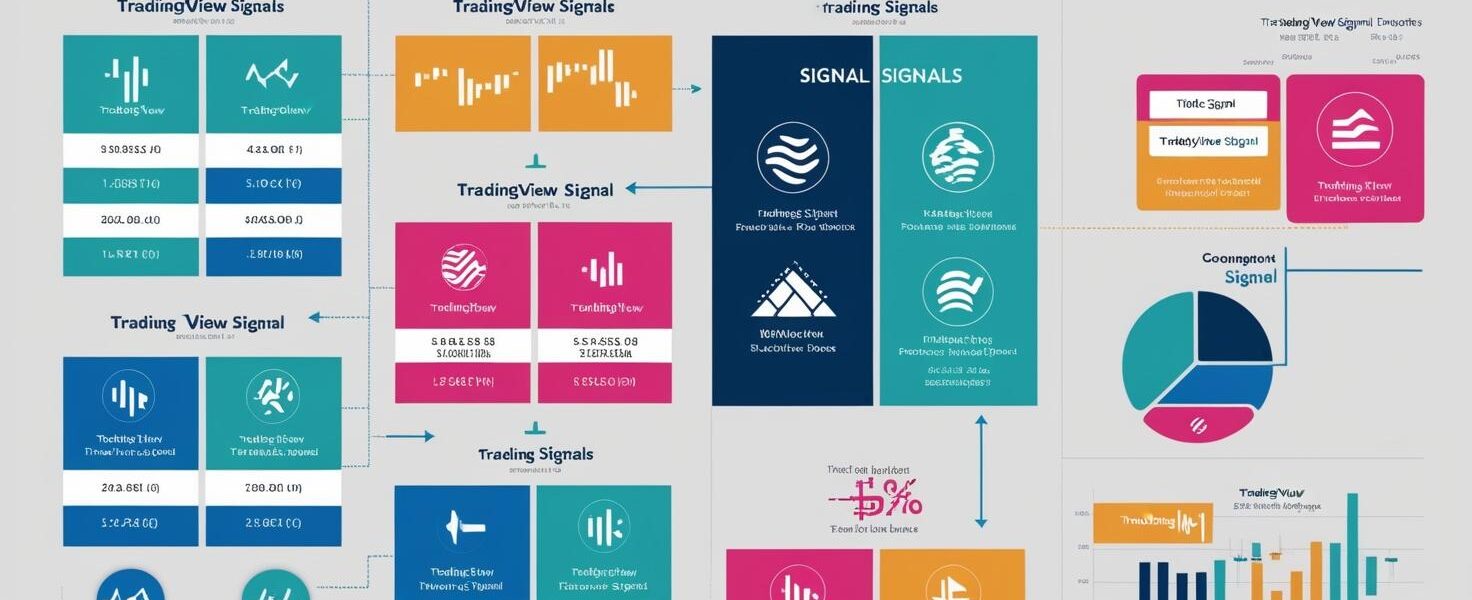Intraday trading is an adrenaline-filled game in the realm of the stock markets, where judgments have to be made quickly and correctly. Out of the various tools used by traders, TradingView has grown to be one of the most popular charting tools for both novice and experienced traders. A notable feature of TradingView is its signal indicators, which can give real-time insights into the market’s activity which can affect trading decisions.
But the question that comes to mind is: Can we really trust on TradingView signals for intraday trading? In this article, we shall explore the various different aspects of TradingView signals as we will be from analyzing its advantages and possible disadvantages as well as how you can use it strategically in the pressurizing world of intraday trading.
What Does Tradingview Signal Mean?
Before analysing if these signals are good, it’s important to understand what TradingView signals are. In essence, signals are alerts that occur by way of technical indicators or strategies that can alert traders to specific price action that can mean trading opportunity. These signals may be based on a wide range of criteria including:
Price levels (support and resistance)
Trends changes (e.g. reversal, break out)
Technical indicators (RSI, MACD, Moving Averages)
These signals are either created by TradingView’s in-built algorithms or by customised scripts that can be created by traders based on their individual strategies.
The Key Components to TradingView Signals
- Technical Analysis indicators
TradingView signals are mostly based on the technical analysis that analyzes previous price movements and trading volumes to forecast future market action. Most popular and frequently used indicators that produce signals include:
Moving Averages (MA): Helps to track trends by using price movements that are converted into an average of all the data. The Simple Moving Average (SMA) and Exponential Moving Average (EMA) are commonly used in the signal generation for trend directions.
Relative Strength Index (RSI): RSI creates a measurement of the rate of movement and change of a price to tell if a price is overbought or oversold. TradingView signals can alert traders of the point when an asset is nearing these levels which signals potential reversal points.
MACD (Moving Average Convergence Divergence) : This is a trend following momentum tool used in identifying the strength and direction of a trend. Signals from MACD, often times can occur when the MACD line crosses the signal line, buy or sell opportunity signals can occur.
- Chart Patterns and Price Action.
Some of the signals on TradingView can also be created from some recognized chart patterns, such as:
Head and Shoulders
triangle (Symmetrical) Asclent (Ascending) Descant (Descending)
Double Tops and Bottoms
Price action-based signals rely on reading the candlestick patterns and how the price is moving in certain market conditions. For example, the buying sell signal for bullish engulfing candle can be a buy scenario while selling buy signal for bearish engulfing.
- Custom Indicators and Alerts
TradingView provides the flexibility of traders to create their own strategies based on Pine Script, a native TradingView coding language. By generating custom scripts, traders can share unique trading style and create individual commands that can be customized to fit their needs.
How Reliable are TradingView Signals?
Advantages of Using TradingView Signals
Real-time Alerts: Intraday trading demands real-time action and TradingView real-time signals system helps traders get a head start. The alerts are timely and accurate so that trades don’t miss out on key opportunities.
Highly Customizable: As mentioned, TradingView offers the user the option to modify and customize their signal strategies based on their trading preferences. For this reason, the system is very flexible and can be configured to match different risk profiles.
Wide Range of Indicators: TradingView has a wide range of indicators and strategies that you can use. Whether you are into trend following or mean reversion approach, TradingView has something for everyone, which is crucial for intraday traders as they want to get a quick response from the market.
Community Insights: TradingView has a large community of traders from all over the world and many of them share their custom strategies and signals. The platform provides an open-source environment, which means that traders can benefit from the wisdom and experience of others.
Backtesting: The platform offers a backtesting feature which provides traders with the ability to backtest their trading signals against historical data and may help them gain confidence in the efficiency of the trading signals before they can use them for live trading. This can be an effective tool for intraday traders who require the ability to test their strategies in their short term.
The Drawbacks Can We Really Rely on these Signals?
While the benefits of TradingView signals are obvious, their reliability in the world of volatile intraday trading are not fool-proof. There are a number of things to consider:
Market Noise: Markets within the day are most of the time volatile; prices move based on sudden news, economic reports and even shifts in sentiment. TradingView signals which are technical indicator based, do not necessarily capture these real-time developments. Relying too much on signals within such an environment could result in erratic or false decisions.
Lagging Indicators: Some of the popular indicators used by TradingView such as moving averages or RSI are lagging indicators. This means that they are based on the past price movements and they may not be fully reflective of the actual market conditions. In a dynamic intraday environment, it is possible that relying on a lagging signal will make you act too long after the fact and miss your chances.
Overfitting in Custom Strategies Believe it or not, customizing Pine Script to between in personalized strategies may be desirable but may lead to overfitting. Traders can get too specific in their trading strategy based on historical data, which can make them less likely to adapt to changes in the market. This may result in unexpected losses when it comes to trading in real time.
Signal Overload: With the constant generation of signals on TradingView, intraday traders can consider getting overwhelmed. Too many signals would create a situation of analysis paralysis where the trader has a hard time making decisions because of a plethora of contradictory signals. The key is not discarding other signs that may not be as significant as well – this becomes experiential.
Execute and Monitor: Though signals for trade can be determined automatically, the actual work of executing trades using these signals is where human traders usually mess up. Emotions such as fear and greed can cloud judgment so that traders second guess or act impulsively. The quality of signals may not matter either if the trader does not have the discipline to follow them consistently.
How to Make Use of tradingview signals in intraday Trading Truly?
All in all, Tradingview signals can be an invaluable asset when used properly despite their drawbacks. Here is how to make them perform their best in intraday trading.
Risk Management and Fundamental Indicators
It is important to combine Tradingview signals with proper risk management strategies. With stop-loss orders, and appropriate position sizes, you will always be protected against incurring big losses even if a signal turns out to be a failure and you have a predetermined risk-reward ratio established.
Use Multiple Indicators
Instead of using a single indicator, it is best to use several signals which confirm trades. For example, RSI can be used in conjunction with moving average crossover to give a stronger signal. If several of these indicators point in the same direction, the trade would have a higher chance of a successful trade.
Limit Signal Overload
Setting of filters and customizing alerts is to make sure that you get only the relevant signals for your strategy. Tradingview enables users to refine signals based on different parameters such as price levels or certain indicator conditions, therefore, it becomes easier to not track multiple signals and get overwhelmed.
Backtest Your Strategy
Therefore, it is very important to always backtest your signal-based strategy to determine its performance. This can help you to know how the past and tinker the strategy accordingly. TradingView’s backtesting tools are robust and they provide a lot of insight into how different signal-based strategies would hold up over time.
Remain Updated With Market News.
Remember that signals are only a part of the equation. Always stay abreast of significant news in the markets and economic events, that may have an influence on the price While Tradingview can be used to determine price trends, only staying within the market context can allow the best trading decisions.
Conclusion: Are Tradingview signals reliable?
In conclusion, Tradingview signals can indeed be helpful for intraday traders to make prompt and well-informed decisions, but they cannot necessarily be relied upon. As with any technical tool, they have limitations, particularly with fast moving markets. By merging signals with good risk management principles, eliminating noise and using several indicators, traders have a higher chance of increasing in their chances of succeeding.
Ultimately, it is not about individual prowess of Tradingview signals but rather their integration into a comprehensive and cohesive trading strategy that comes from within. The intraday trading approach is not about winning big amounts of money regularly, it is the art of discipline, consistency, and understanding the market nuances.




